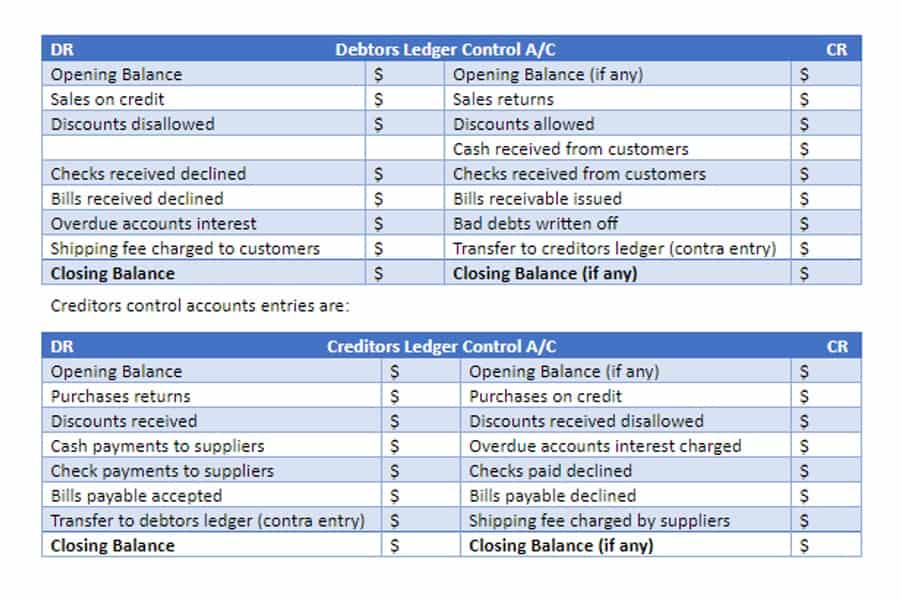How to Record a Sales Journal Entry with Examples
Finally, the amount of time needed to post entries is reduced. Although each transaction must be posted to the subsidiary accounts receivable ledger, only the totals for the month have to be posted to the general ledger accounts. Such as sales discounts, sales returns, and discounts can reduce revenue because they can add to the postage of selling goods and other expenses. Because inventory is constantly getting an update, the seller adds the cost of the items returns to the inventory account. In addition, the seller must credit the cost of the goods that the customer returns to the goods sold account because this account is a debit when the initial sale is recorded. If you sell a product to a customer who pays in cash, you’ll have to create several entries.
Table of Contents
A notation would be made in the reference column to indicate the payment had been posted to Baker Co.’s accounts receivable subsidiary ledger. After Baker Co.’s payment, the cash receipts journal would appear as in Figure 7.21. The use of a reference code in any of the special journals is very important.

How to Record a Sales Journal Entry [with Examples]
For a refresher on perpetual versus periodic and related accounts such as freight-in, please refer to Merchandising Transactions. A sales journal is a subsidiary ledger used to store detailed sales transactions. Its main purpose is to remove a source of high-volume transactions from the general ledger, thereby streamlining it. The transaction number, account number, customer name, invoice number, and sales amount are typically stored in the sales journal for each sale transaction. When a transaction is recorded, the accounts receivable account is debited, while the sales account is credited.
- For example, a seller can offer a 2% discount if the buyer pays within ten days of the invoice date.
- While the payment is due at the end of the same month as the month of sale, the terms are written as n/eom (end-of-month).
- The transactions themselves end up on transaction files rather than in paper journals, but companies still print or make available on the screen something that closely resembles the journals.
- The seller typically records the sale as a debit to Accounts Receivable or Accounts Receivable and a credit account.
- Each client is given a certain number and the same number, post reference is different from the account debited, as this does not contain the amount of money for a particular order from the client.
- However, if the buyer does not take the discount, the price stated on the invoice will be due in 30 days.
Great! The Financial Professional Will Get Back To You Soon.
When you make a sale, a collection of sales tax also takes place, hence the increase to the liability account. To record a returned item, you’ll use the sales returns and allowances account. This account is for deductions from revenue that result from returns or allowances.

Revenue vs. Profit: What You Need to Know
This can be a bit confusing if you’re not an accountant, but you can use this handy cheat sheet to easily remember how the sale journal entry accounts are affected. Debits and credits work differently based on what type of account they are. For instance, cash is an asset account, while cost of goods sold is an expense account.
- The bank will later transfer the cash from the sale to the retailer’s bank account.
- Note that the information for both the cash receipts journal and the cash disbursements journal are recorded in the general ledger Cash account.
- However, it also increases the total cost of goods sold for your business.
- A sales journal entry is a journal entry in the sales journal to record a credit sale of inventory.
- The product experts at Reviewed have all your shopping needs covered.
- This is because of the fact that sales are basically an income-generating operation, so sales are entered in the credit side of the sales journal.
- First, the accounts receivable account must increase by the amount of the sale and the revenue account must increase by the same amount.

The idea behind this is related to getting rid of on-hand inventory. When you sell it, you reduce the liabilities you have with inventory. However, it also increases the total cost of goods sold for your business. In the next section, we’ll talk more about what each debit and credit means for the sale entry. Double Entry Bookkeeping is here to provide you with free online information to help you learn and understand bookkeeping and introductory accounting.

What Is a Sales Journal Entry?

A sales journal entry is a bookkeeping record of any sale made to a customer. You use accounting entries to show that your customer paid you money and your revenue increased. While all companies maintain a single journal for bookkeeping records, some companies like to divide journals into multiple types which makes it easy to track down financial records.
How Do You Record a Journal Entry for Sales?
He has been the CFO or controller of both small and medium sized companies and has run small businesses of his own. He has been a manager and an auditor with Deloitte, a big 4 accountancy firm, and holds a degree from Loughborough University. This is done to avoid the chances of fraud to avoid any unnecessary losses.
- Although each transaction must be posted to the subsidiary accounts receivable ledger, only the totals for the month have to be posted to the general ledger accounts.
- For example, cash receipt journals are used by merchant businesses to record cash receipt transactions.
- You use accounting entries to show that your customer paid you money and your revenue increased.
- On the other hand, assets sold in cash are recorded in the cash book and the sales of assets on credit are recorded in the proper journal.
- From the beginning, the Panthans established a regimeof monthly meetings, usually the first Sunday of every month.

Laisser un commentaire